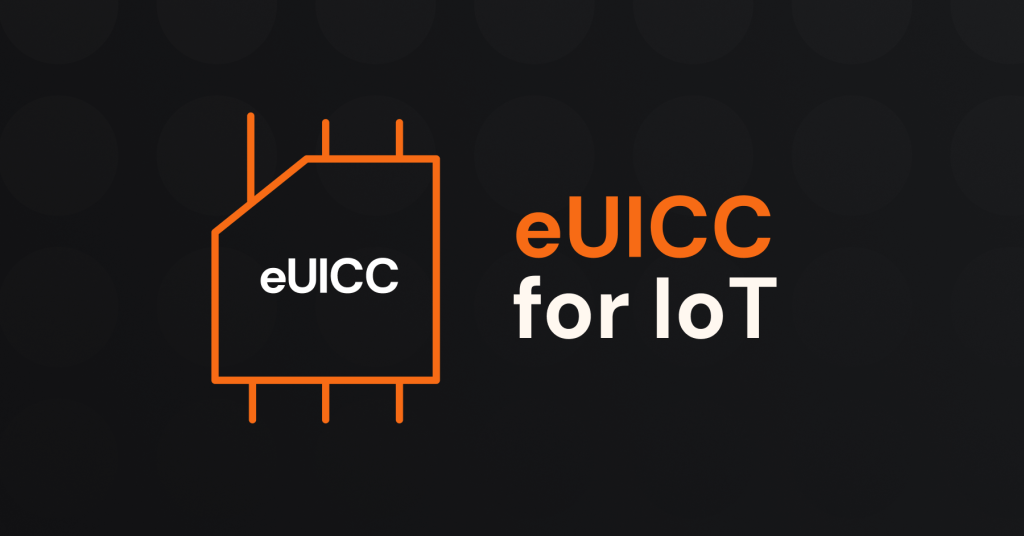In the ever-evolving landscape of the Internet of Things (IoT), traditional SIM cards have long been the go-to solution for connecting IoT devices. A revolutionary solution is underway, the SoftSIM. This cutting-edge technology is set to redefine the way we think about SIM cards, offering a purely software-based approach to IoT connectivity. Join us as we delve into the world of SoftSIM, its benefits, and the possibilities it holds for the future of IoT connectivity
In this article we’ll talk about:
What is SoftSIM?
A SoftSIM, also known as a software SIM, soft SIM, or firmware SIM, is a SIM (Subscriber Identity Module) that doesn’t require any additional hardware, such as SIM cards or chips. The Onomondo SoftSIM is the first hardware-agnostic IoT SIM to operate solely as software, as it uses pre-existing resources on a device, such as a radio module or microcontroller.
The Onomondo SoftSIM is a GSMA-compliant UICC SIM that supports all of the features required for connectivity and is fully compatible with 2G, 3G, 4G, LTE-M, and NB-IoT.
What is the difference between SoftSIM and eSIM?
Understanding the difference between SoftSIM and eSIM is important, as they frequently get confused with each other. The term eSIM is often used to describe two related but separate concepts in the industry. One being the embedded SIM form factor, and the other being the eUICC (Embedded Universal Integrated Circuit Card) software on SIMs. eSIM, the form factor, is a non-removable SIM that can be soldered directly onto a device’s circuit board, whereas the eUICC software standard enables SIMs to carry multiple network profiles at once.
Unfortunately, these two concepts are often conflated in the IoT space. Officially, the GSMA defines eSIM as the eUICC architecture, but it does often get bundled with the embedded SIM chip when marketed to the IoT industry.
The Onomondo SoftSIM is an UICC SIM with all the same capabilities as a physical UICC SIM. In essence, SoftSIM is an application downloaded from the cloud onto a module, where it co-exists with other software. The network operator profile can then be stored in the already secure environment present on the device, just as one would store other sensitive information on a physical device.
Learn more about the differences between SoftSIM, eSIM, and iSIM.
What are the benefits of SoftSIM?
Lower the bill of materials
Because the Onomondo SoftSIM removes the need for SIM hardware, we do not charge the standard SIM card fee. Instead, it’s 100% free of up-front costs., This offers greater flexibility within the commercial model for a business’s IoT project. Customers won’t have to pay for a SIM until it comes into use, rather than the usual model of having to buy a SIM up front for every device. Using a SoftSIM will not only speed up deployment time but also reduce overall production and operational costs.
Reduce inventory management
The Onomondo SoftSIM can be downloaded directly using the Onomondo API, which instantly reduces the lead time when you want to deploy. Compared to the conventional process for ordering, shipping, and delivery of SIM cards, this rapid rate of SIM set-up is unparalleled.
SoftSIM profiles are provisioned through the Onomondo API, making it extremely easy to integrate connectivity into your device. This can shorten shipping time while also lowering the costs involved with transporting large quantities of SIMs across the world.
Increase battery efficiency
In most IoT devices, the battery ends up being the most expensive part. Across the market, battery costs can make up 70% of the total cost of a device. A contributing factor is the use of regular physical SIMs. A physical SIM is in itself a capable MCU with a CPU, RAM, and persistent flash memory, which can cause significant power consumption.
This is especially evident in ultra low power IoT devices that rely on eDRX and PSM, where the idle current of the main processor is a few microamps. Regular SIMs will often remain powered on for a significant amount of time before finally being turned fully off. During this period, the SIM will use significantly more power than the main module itself.
Using SoftSIM can however reduce overall battery usage since the SoftSIM can follow the module’s power-state directly, which ultimately lowers the cost per device without compromising efficiency.
SoftSIM can provide additional benefits, discover how SoftSIM can help lower carbon emissions.
How does SoftSIM work?
The SoftSIM application is stored and executed as pure software on IoT devices using existing hardware resources. In contrast, the MFF2, MFF-XS, and iSIM all require dedicated hardware components.
The SoftSIM itself is a library that can handle Application Protocol Data Unit (APDU) commands. These commands are typically passed between the module and a physical SIM, but if modules have integrated SoftSIM, these commands are passed to the SoftSIM component instead. The SoftSIM component will then manage access to key material and other relevant files or assets, and use the keys to authenticate the network and the device.
How does SoftSIM handle provisioning?
By replacing physical SIMs, provisioning can happen on demand, with no need to wait for your next physical SIM shipment. Provisioning can happen on-demand during manufacturing or be fetched later before manufacturing begins.
Is SoftSIM secure?
Essentially, the Onomondo SoftSIM utilizes what is already on the hardware to accommodate the security protocols. SoftSIM uses what is available on the hardware to store keys. This can be the TPM (Trusted Platform Module), a trusted execution environment in a trust zone, or similar protected storage. These methods are widely accepted and trusted in the industry.
Have we sparked your interest? You can learn more on the SoftSIM product page.






